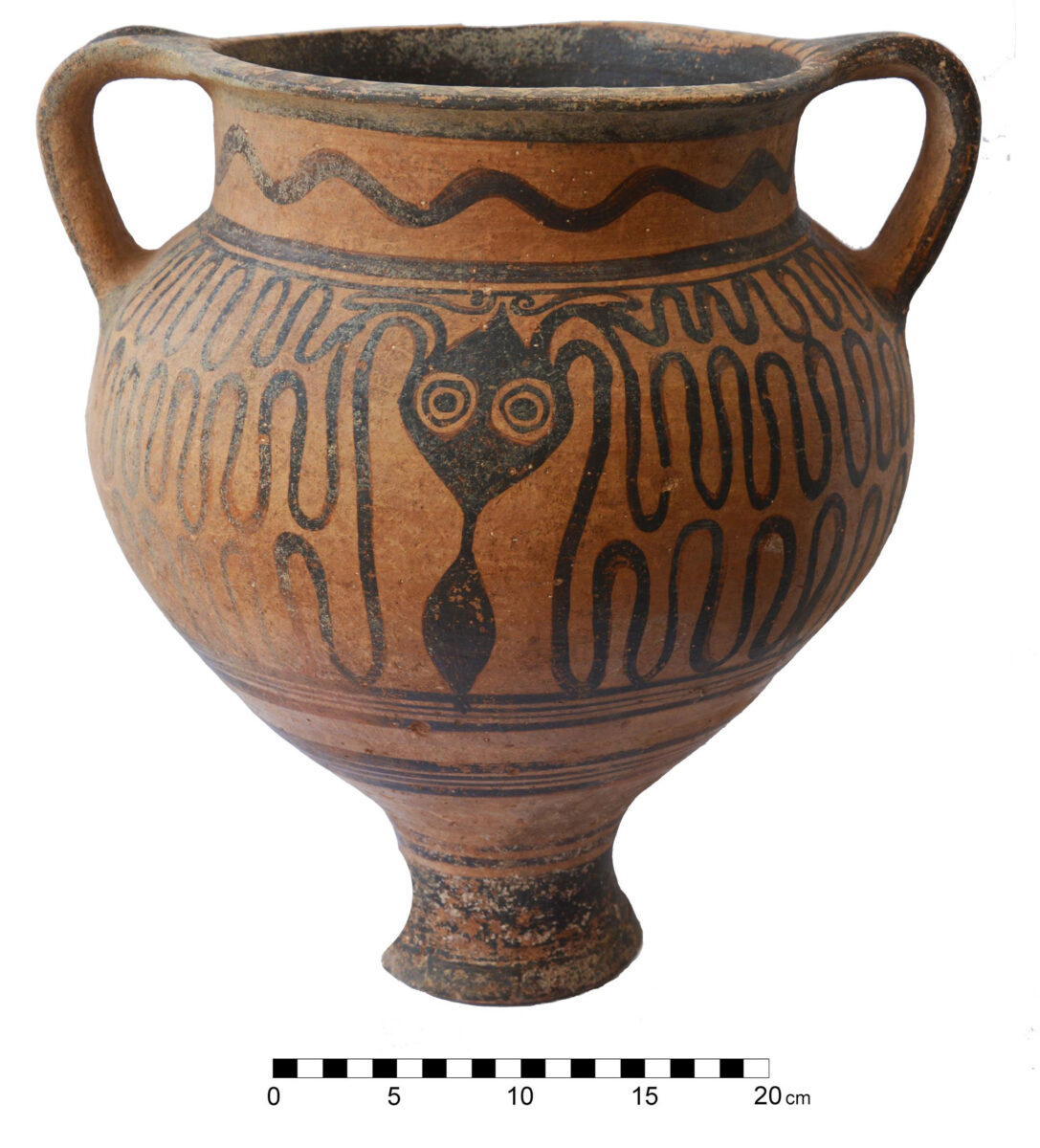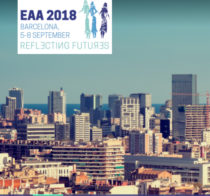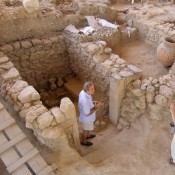The Department of Antiquities, Ministry of Transport, Communications and Works, announces the completion of the 2023 excavations at Dromolaxia-Vyzakia (Hala Sultan Tekke) by an international team, headed by Professor Peter M. Fischer from the University of Gothenburg, Sweden, and assisted by Dr Rainer Feldbacher. The site at Dromolaxia-Vyzakia was a Late Bronze Age harbour settlement, of at least 25 hectares in size. The settlement, which flourished from c. 1630 to 1150 B.C., lies along the shores of the Larnaca Salt Lake, near the present mosque of Hala Sultan Tekke and close to the Larnaca International Airport. Alongside and after the excavations, other members of the Swedish team, supervised by Dr Teresa Bürge, processed the finds from previous excavations kept in the storerooms of the Archaeological Museum of the Larnaka District. The Swedish team was assisted by bioarchaeologist Yuko Miyauchi, PhD student of Professor Kirsi Lorentz, and Professor Sorin Hermon and his team from the Cyprus Institute. The teams from the Cyprus Institute provided expertise for the excavation and recording of the human remains, and 2D and 3D presentations of objects in addition to material analyses.
Guided by previous geophysical surveys, excavations concentrated on Area A which is the city’s cemetery. Three chamber tombs, preliminarily dated to the 14th century BC, were exposed. One had been looted, most likely in the 19th century AD. Although the 19th c. looters destroyed many objects and human remains, several items and the scattered human bones were identified, carefully excavated and conserved. These items comprise jewellery and imported pottery (mainly sherds) from the Mycenaean sphere of culture but also from Egypt and Anatolia.
Two nearby tombs were undisturbed, apart from the collapse of their chambers in antiquity. The tombs contained an array of impressive grave goods, including locally produced pottery and ornaments, as well as numerous items of jewellery and other imported objects from the Aegean, Anatolia, Egypt, the Levant and cultures further east and north. There were, for instance, several items of amber, most likely from the Baltic Sea, of deep blue lapis lazuli from Afghanistan and of dark red carnelian from India. Other objects include sophisticated jewellery of precious metals, including diadems, and daggers, knives, spearheads and a mirror of bronze. Several items of ivory and faience are imports from Egypt during the famous 18th Dynasty, the time of the well-known pharaohs Thutmose III, Eknaton and his wife Nefertiti.
The study of the skeletal remains is ongoing and the estimation of the number of individuals, their gender, age-at-death, indications of disease and trauma await further investigation. New-borns, infants and adults were found with numerous burial gifts.
The city’s wealth seems to have been based on the production of copper and trade with near and distant cultures. Judging by the rich burial gifts, the tombs belonged to families of the city’s ruling class who took part in the export of copper and intercultural trade.





